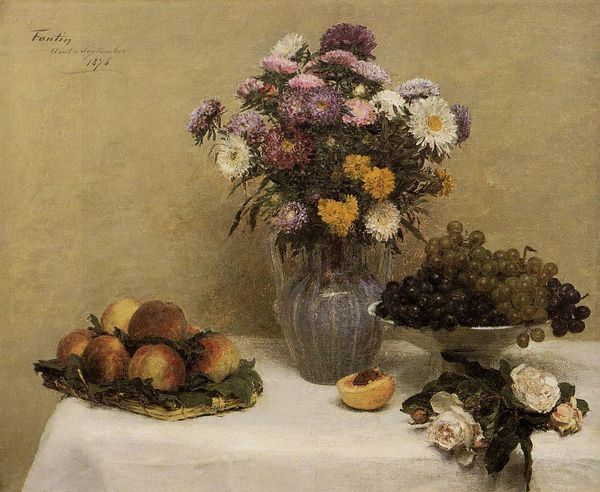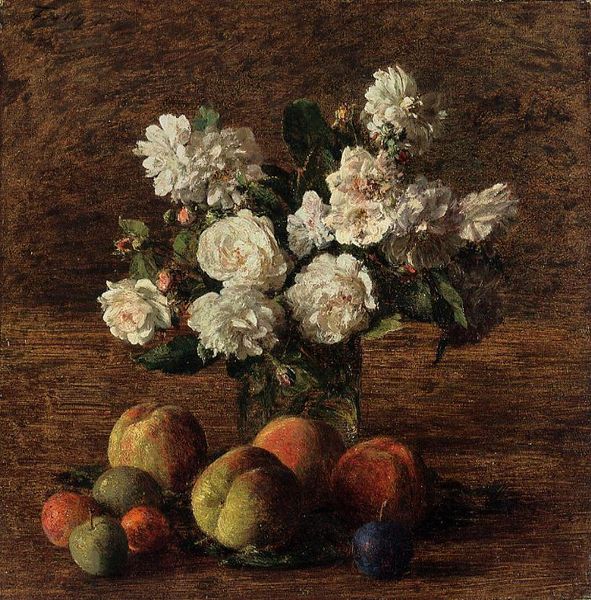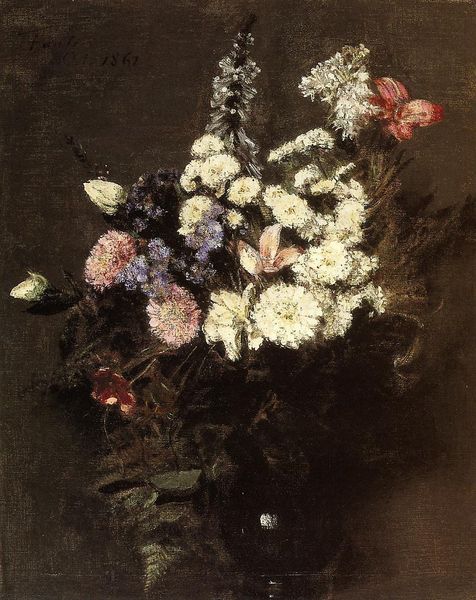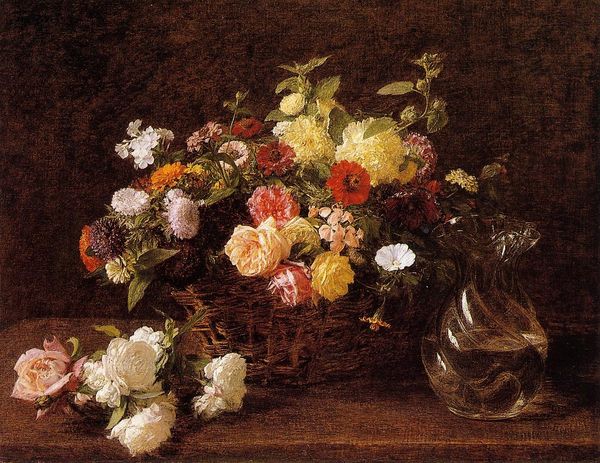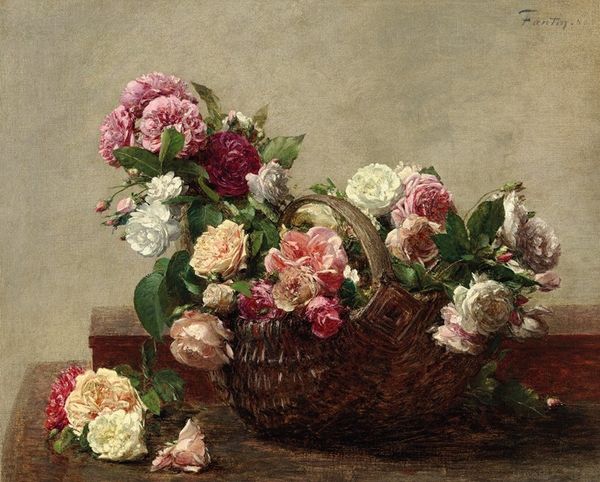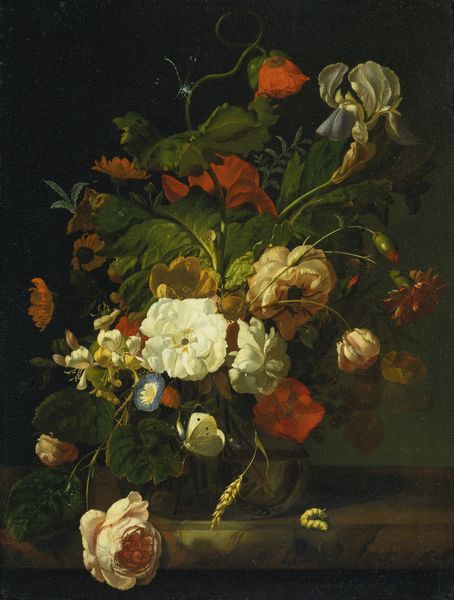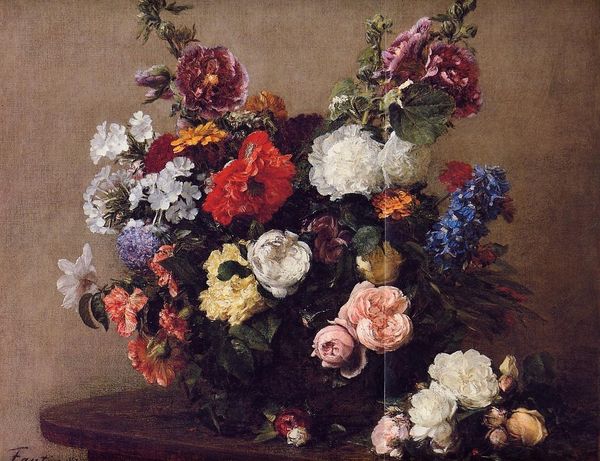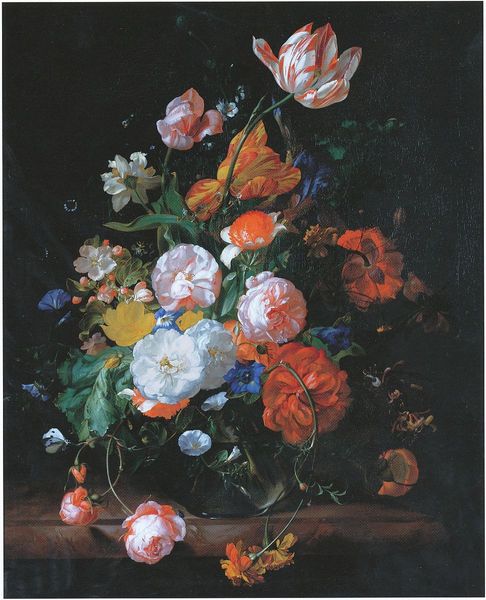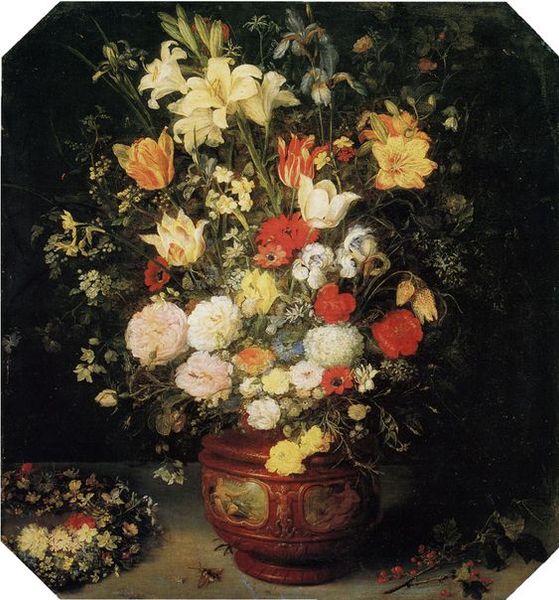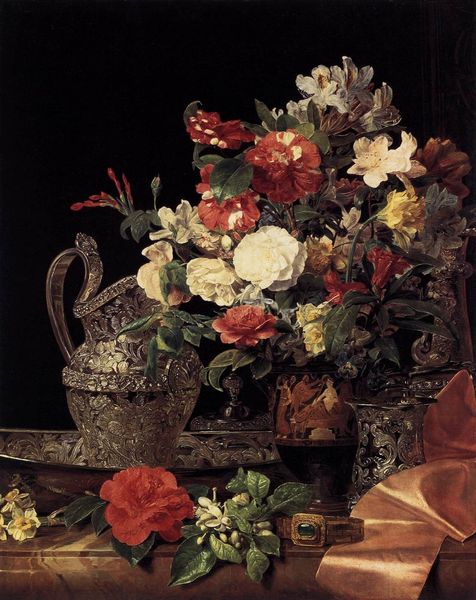
painting, oil-paint
#
painting
#
impressionism
#
oil-paint
#
flower
#
oil painting
#
realism
Copyright: Public domain
Curator: Henri Fantin-Latour painted "Still Life Chrysanthemums and Grapes" in 1872. The painting presents us with an intimate scene of cultivated beauty and understated abundance. Editor: My first impression is of subdued opulence. The darkness of the backdrop amplifies the luminosity of the white chrysanthemums, which sit above a bowl of grapes and other fruit in what seems to be a basket. It's as if the scene is captured in a fleeting moment, as fruit often does not last forever. Curator: The composition is undeniably skillful. Note the pyramidal structure—the chrysanthemums form the apex, leading our eye down to the cascading grapes and the assortment of fruit in the foreground. This strategic arrangement, grounded by the sharp dark backdrop, grants the whole picture a pleasing sense of formal stability. Editor: But the way he layers the brushstrokes to create texture is perhaps more telling, from the heavy layering which is applied to the flowers and leaves, and very light for the grapes. It demonstrates that Fantin-Latour wasn't simply painting what he saw. Curator: Absolutely. We see here a tension characteristic of its era, reflecting the move from Realism to Impressionism. Note how light plays with the objects. Forms are represented through tone, and color appears, if in subtle ways. Consider, as well, the visual rhymes set by the orb-like shapes of fruit that connect top and bottom: in short, form finds correspondence. Editor: Yes, and the contrast in how the vessels containing the fruit are constructed also invites an inquiry into the artist's own social context. Was Fantin-Latour trying to highlight bourgeois status with luxurious crystalware versus rustic weaved baskets? This is an intriguing look at art, craft, class, and what kind of labour brings beauty to our table. Curator: Indeed. "Still Life Chrysanthemums and Grapes" serves as more than a simple arrangement of objects, but the material culture as well; it evokes philosophical questions about taste, production, and ways of seeing and consuming in a rapidly changing world. Editor: Agreed. And considering Fantin-Latour’s paintings were often bought directly by middle-class people to decorate their dining rooms, we come full circle. Art ends up mirroring life, influencing more social practices and the making of art.
Comments
No comments
Be the first to comment and join the conversation on the ultimate creative platform.
